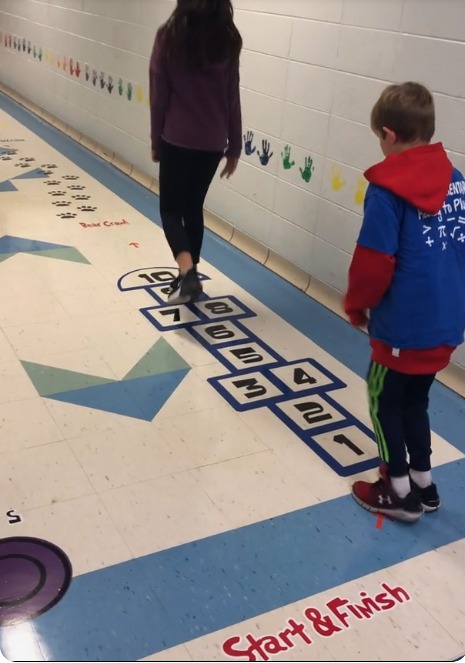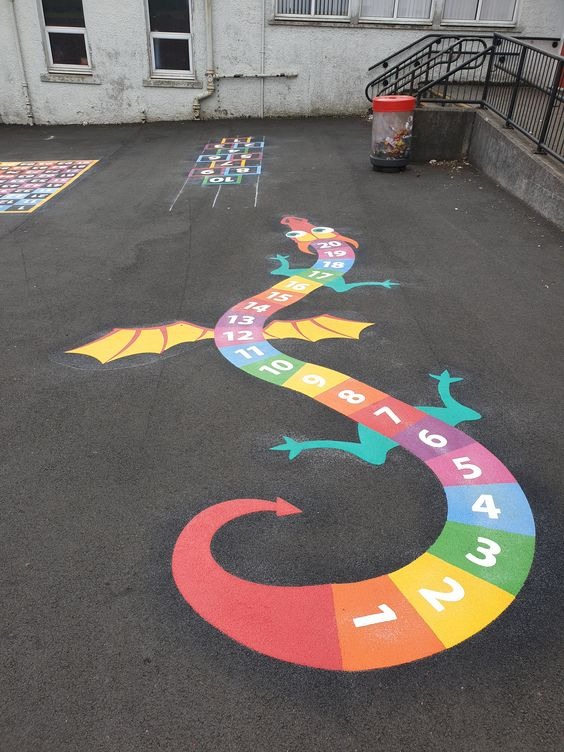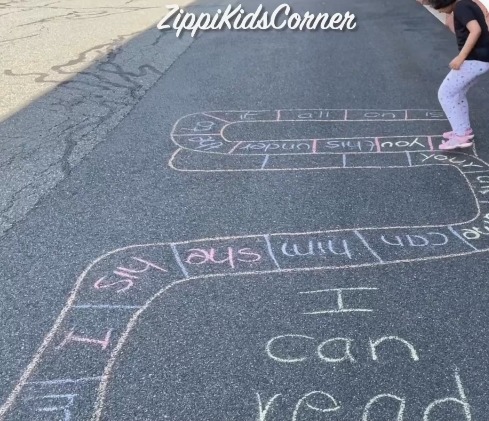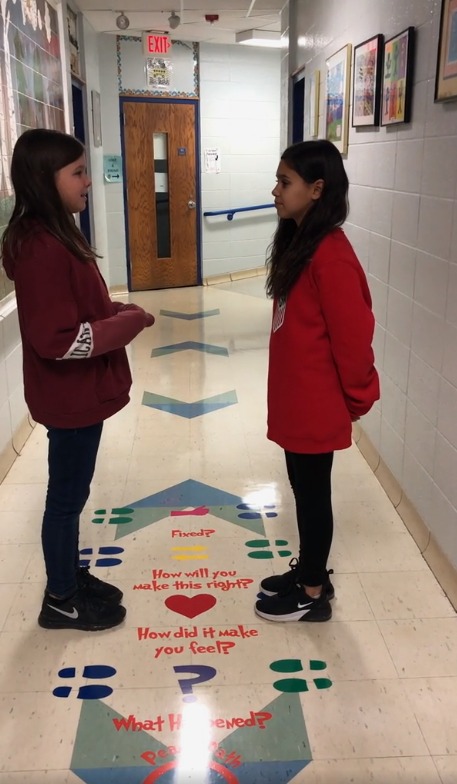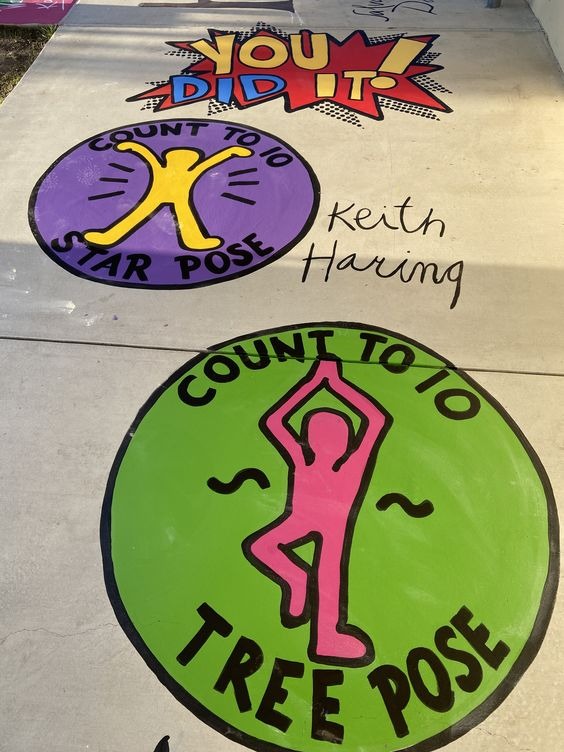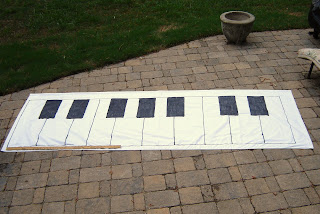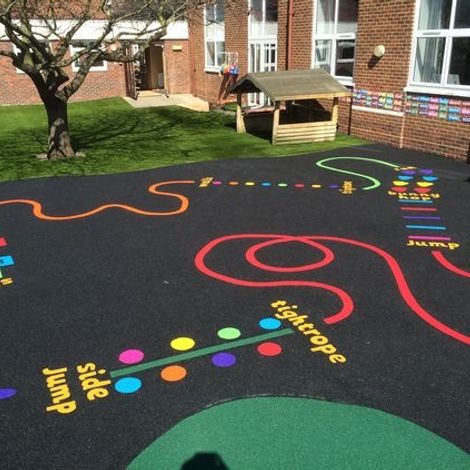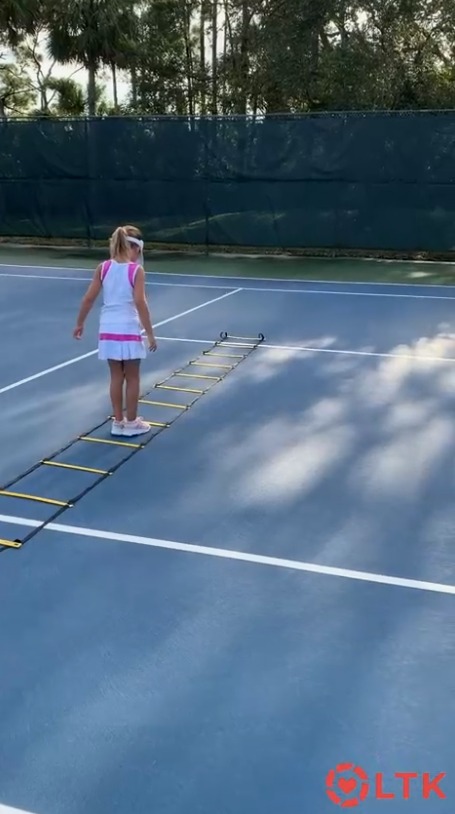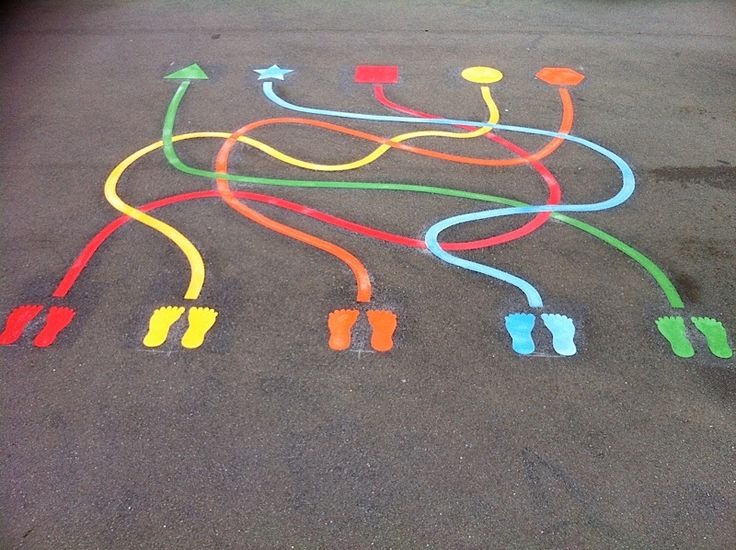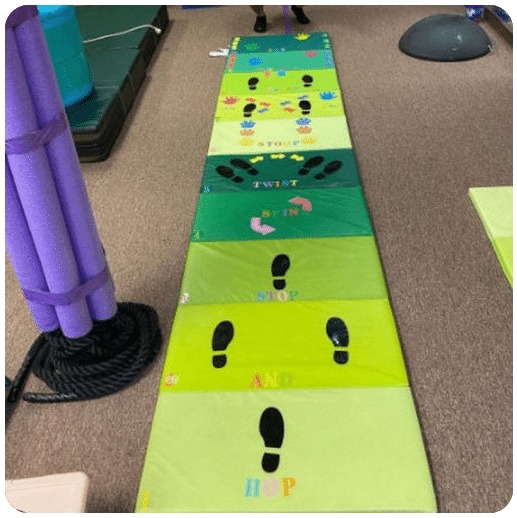Gone are the days of long, boring lectures and expecting students to sit still in their seats focusing for hours on end. We’ve come to realize that we can better engage students by stimulating the senses and incorporating movement and play into the school day. In fact, ever since 1989, the United Nations has recognized play as a human right. Schools may only grant so much time per day for recess, so, how do you incorporate more play and movement into your students’ day? Try creating a sensory path in school!
What is a Sensory Path?
A sensory path is essentially a very simple obstacle course with different sensory stations along the way. They often incorporate floor stickers or other kinds of words or drawings for students to follow. The words contain simple instructions detailing for students how to complete the objectives along the path.
For example, this video posted by special education teacher, Holly Barker Clay, shows a young student using a sensory path she’s designed. At one point along the path, the word “Jump” appears, followed by floor decals of lily pads and frogs. Arrows along the floor point the way. Clay’s young student crouches down and leaps like a frog from lily pad to lily pad along the sensory path.
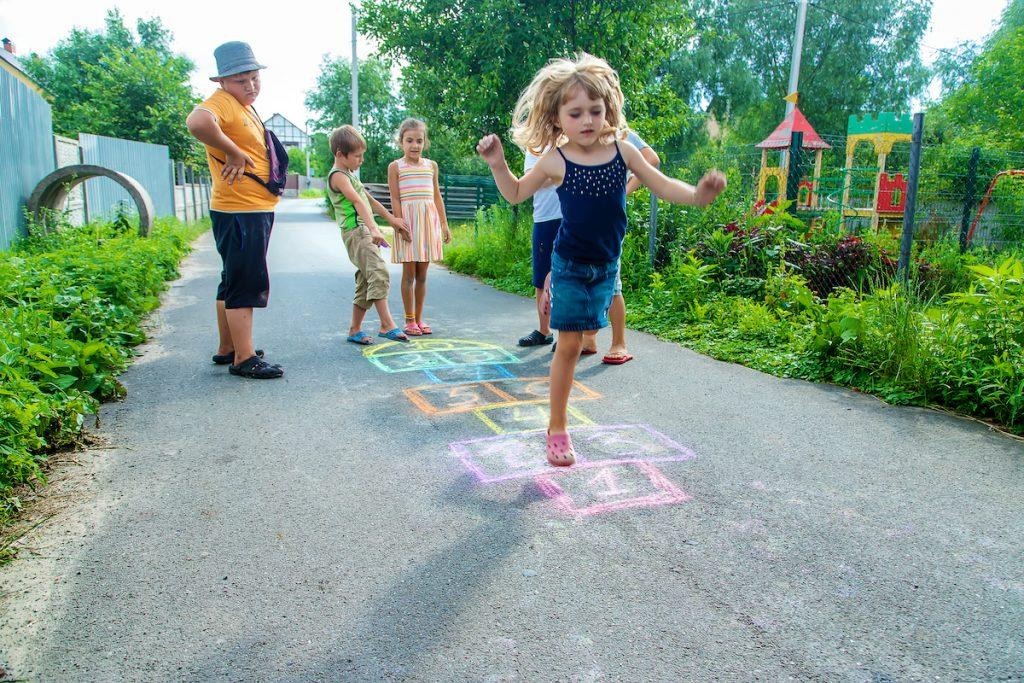
Table of Contents
- What is a Sensory Path?
- What are Sensory Paths Used for?
- What are the Benefits of a Sensory Path?
- Sensory paths aid with issues and sensitivities related to sensory processing
- How do You Make a Sensory Path?
- Sensory Path Ideas
- Tips for Creating a Sensory Path
- 10 Examples of Sensory Paths
- Sensory Path FAQ
What are Sensory Paths Used for?
Sensory Paths are a great way to give kids a “brain break.” They can also be used to incorporate concepts being learned, as well as a means by which students can decompress.
What are the Benefits of a Sensory Path?
They release pent-up energy
Maybe you’ve noticed, but kids tend to have quite a lot! It’s no easy task sitting at a desk for hours on end–for kids and adults alike! Sensory paths provide a way to channel excess energy in an organized, optimal fashion.
Kids get a chance to sharpen their gross motor skills.
Gross motor skills are movements that incorporate the coordination of large muscle groups. So this would include activities like running, jumping, sweeping the floor, climbing stairs, or dancing, to name a few. Basically, gross motor skills involve any activity where the whole body works together to complete an action. Balance and coordination take time and effort to master. We adults may take our gross motor skills for granted, but we all had to learn them at some point, just as our students are working on learning them now. Sensory paths are all about engaging gross motor skills! So they are an excellent little moment out of the day for children to improve these crucial abilities.
Spatial awareness improves
Through the use of sensory paths. Spatial awareness is the understanding of where one’s body is physically in relation to other people or objects. To go back to the example of Clay’s student leaping between lily pads, it takes spatial awareness for him to know how far to leap. Spatial awareness is a crucial skill to develop in childhood as it affects the ability to move safely and effectively through the world. It also plays a critical role in social skills. The ability to understand how far or close we are to others greatly impacts the success of social interactions.
Proprioception improves
Proprioception is the understanding of how to use your muscles to complete an action. Not only is Clay’s student using his spatial awareness to correctly land on each lily pad, but his proprioception works in tandem with his spatial awareness, helping him calculate exactly which muscles and how much force from them are needed to carry out the targeted leaping.
Hand-Eye Coordination
Is the meeting of spatial awareness and proprioception. When those two cognitive skills are strong, good hand-eye coordination is the result. Hand-eye coordination is necessary for writing, typing, driving, washing dishes, playing sports, eating, and so much more. Humans can’t get by without the ability to coordinate spatial awareness and proprioception. Fortunately, sensory paths offer a fun way to work on hand-eye coordination!
Sensory paths aid with issues and sensitivities related to sensory processing
They’re commonly used therapeutically for students with autism or ADHD. Neurotypical students can frequently tune out sensory information that they don’t need at a given moment. Things like a bug flying around the classroom, fluorescent lights buzzing, or people walking by outside. For students who struggle to process sensory stimuli, the world around them can get overwhelming. They may focus on or react to the “wrong” thing. Sensory paths help to give them a break from all the different stimuli they receive all day long, by focusing in on specific stimuli.
Speaking of which, sensory paths help students focus
After a long period of focusing hard on new skills like understanding math, grammar, science, etc. the brain just needs a break! Sensory paths offer a fantastic brain break. Cognitive performance is greatly boosted following physical activity. There’s nothing lazy about taking a break. We need them for our brains to keep chugging away! Especially when that break involves movement.
Not for cognitive function alone, but our bodies need to move! Sensory paths provide and encourage exercise.
n addition to improving cognitive function, a physically active lifestyle reduces the risk of disease, strengthens bones and muscles, and increases lifespans. Kids should be encouraged from an early age to avoid a sedentary lifestyle. Sensory paths normalize movement and play as something that doesn’t only happen in a gym or at recess. An active lifestyle can and should be achieved in small ways throughout the day, such as what can be accomplished with a sensory path.
Sensory paths provide stress relief
For any kid at their wits’ end processing complex educational concepts on top of social stress, an ever-frightening world, a challenging home life, or anything else kids may face, a sensory path provides a healthy coping technique. Physical activity releases endorphins. Endorphins make you feel happy and help to ease stress, depression, and anxiety. They also help increase self-esteem and improve sleep. Sensory paths could be used in anticipation of a stressful event like a test, or to help wind down after emotions have run high. You may teach your students to request a turn along the sensory path as a self-regulation technique. Keep it listed as an option for an activity students may choose from when they need a trip to the Calm Down Corner (link to calm down corner article).
Saving the best benefit for last, drum roll, please… sensory paths are Fun! Enough said.
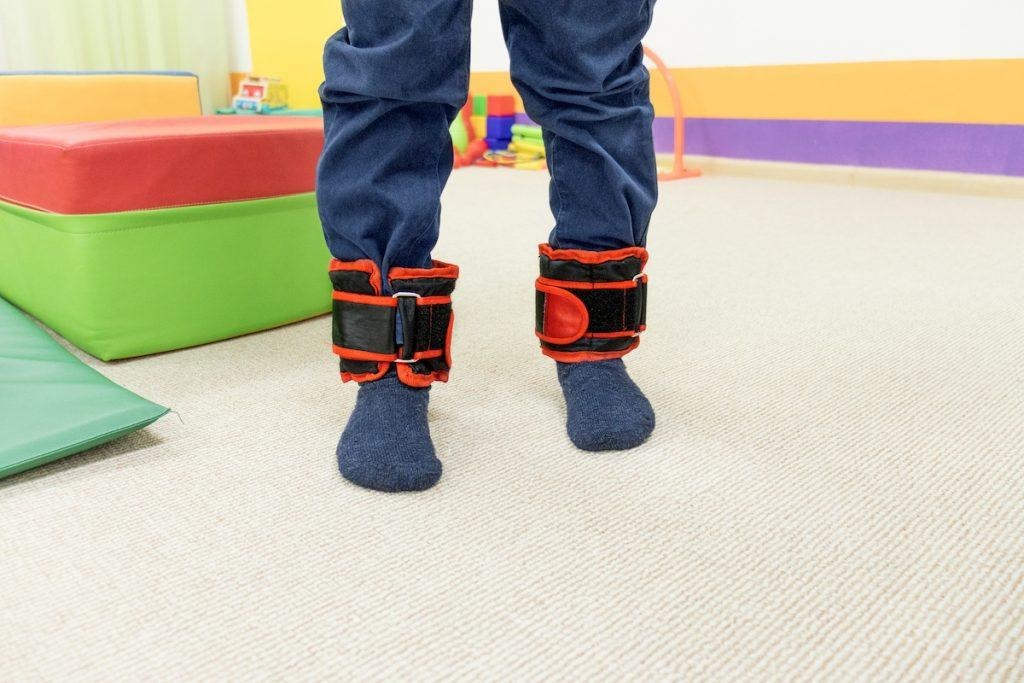
How do You Make a Sensory Path?
Now that you know what your students stand to gain from having access to a sensory path, let’s talk about how you can make one they’ll love.
Choose a Location
The possibilities here are endless! Teachers can create sensory paths for their students at school, but parents can also make them at home for their own children, and so can businesses that frequently have children visiting.
Some location ideas for sensory paths:
- Hallways
- Classrooms
- Cafeterias
- Gymnasiums
- Playgrounds
- Home
- Daycares
- Waiting rooms
- Malls
- Driveways
- Patios
- Basketball courts
- Garages
- Empty parking lots
For a school setting, hallways are a popular choice. Students can use them on their way in and out of the classroom as they begin and end the school day, head to recess, or take trips to the bathroom.
Choose Materials Based on Your Location
If you’re creating a path indoors, sensory path decals are an extremely popular choice. You can also make creative use of colorful tape applied to indoor flooring. Consider printing out some designs that can be taped to the floor., such as the:
Gross Motor Snowflake Challenge: Frozen Theme By Miracles And Moree



If your sensory path will be located outdoors, sidewalk chalk is perfect. Another option is temporary spray paint for grass. This type of spray paint also works on pavement, concrete, gravel, or soil.
Whatever medium you choose, make sure that you have fun with the colors!
Come Up with Fun and Varied Activity Stations
Okay, the most important part. You need to come up with some fun and stimulating sensory stations or activities for your students to do along the sensory path. These can incorporate something your students are working on learning, such as numbers or the ABCs. Or it could just be mindless fun–kids will still receive the benefits detailed above! Either way, make sure the activities are simple enough for kids to do easily. You may advance to trickier challenges along the path, but if you do so, be sure to start and end with easier activities.
Sensory Path Ideas
By no means is this list exhaustive, but below you will find some ideas you can include in your own sensory path:
- Hop, jump, or leap
- Spin in a circle or twirl
- Sing
Gross Motor & Sensory Play Ideas with Songs By Miracles and Moree
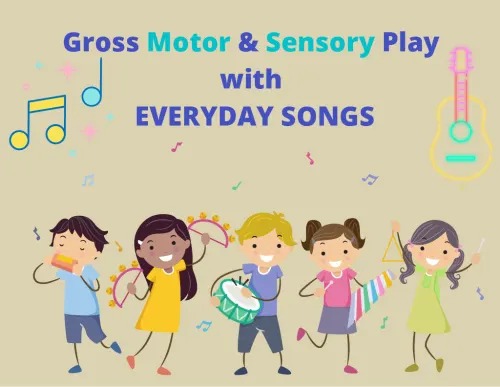
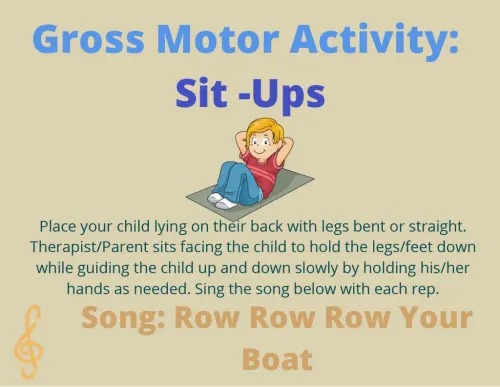
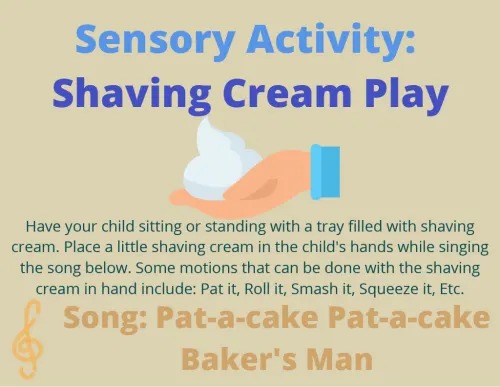
- Balance on a “tightrope” drawn on the floor or ground
- Clap
- Tip-toe
- Leap to touch something hung from the ceiling or tied to a tree branch
- Skip
- Jump in and out of tires
- Blow bubbles
- Spell out words
- Climb
- Draw
- Dance
- Act out different animals, including their different movements and sounds, eg, gallop like a horse and whinny
- Yoga poses
- Stretch
- Take inspiration from holidays and seasons
Gross Motor Movement Cards: Fall & Thanksgiving Theme By Miracles and Moree
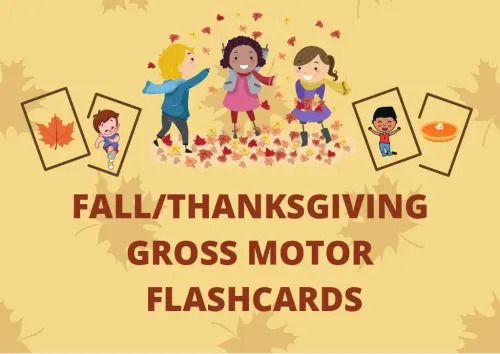
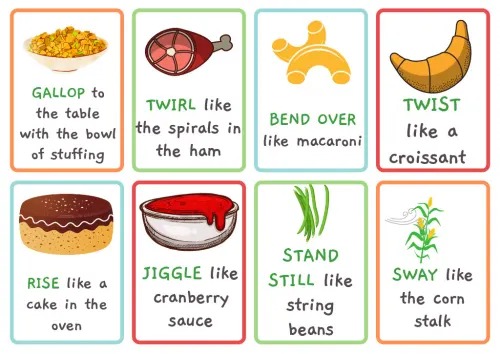
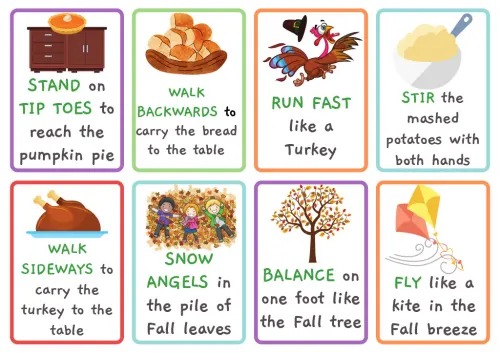
- Strength training exercises using body weight resistance, such as wall push-ups, squat thrusts, and giant steps (lunges)
- Crab walk
- Somersault
- Stomp
- Deep breathing exercises
- Positive affirmations
- Trace letters, numbers, or shapes
- Jumping jacks
- Crawl
- Shimmy
- Cartwheel
- Strike a silly pose
- Think outside the box
Gross Motor Movement Cards: Using a BOX By Miracles and Moree
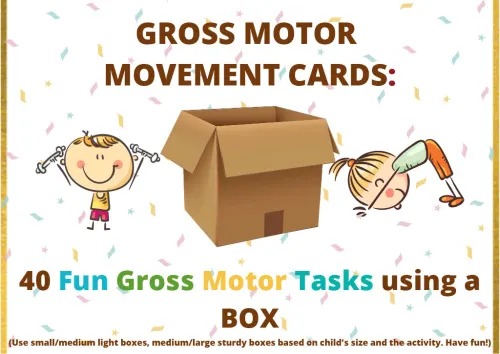
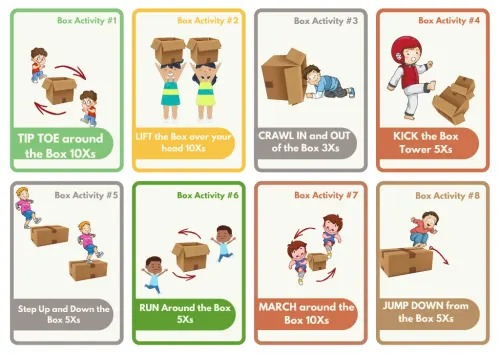
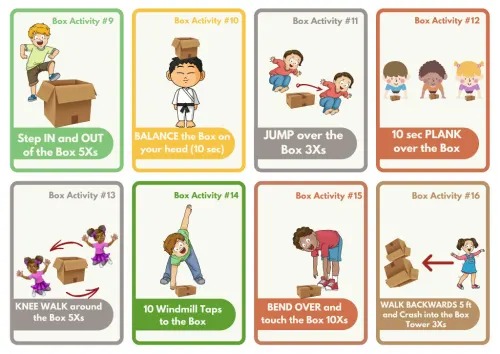
How many more can you add to the list? There’s no limit. If it’s fun or ridiculous or makes kids laugh, you are on the right track!
Tips for Creating a Sensory Path
Tip 1: Don’t forget about the great outdoors
Sensory paths are most commonly set up in hallways, but an outdoor sensory path can be extra exciting!
Tip 2: Use the space you have!
If there’s a drain on the floor, maybe it’s a giant crater for kids to jump over. They can also weave around poles and trees, or hop between stepping stones in a garden.
Tip 3: Make it Strong
If your sensory path is meant to last more than a few days, make it tough enough to withstand all the jumping and stomping feet it’s going to be enduring.
Tip 4: Make it Pop
Make your sensory path colourful and exciting, the design needs to engage.
Tip 5: Get creative
Pique your students’ imaginations. Instead of simply asking your students to hop, Clay let her students become frogs in a pond. You could even have them ribbit as they go. That’s sure to draw out some giggles.
Tip 6: Get Organized
The sensory path should be organized and easy to follow. Each activity should be quick to understand so the momentum can keep going.
10 Examples of Sensory Paths
For some more great sensory path ideas, check out these 10 examples other teachers and parents have shared to Pinterest.
- Sensory Path From LakeHouse Life
LakeHouse Life uploaded this great video of two students making their way through a sensory path in a school hallway, as their teacher helpfully narrates for the viewer what the students’ objectives are at each point along the way. It takes them a little over two and a half minutes to complete the pathway.
- 1 – 20 Dragon From Interior Design And Home Decor Ideas
How creative and beautiful is this dragon from Uni-Play Playground Markings that helps students practice counting up to 20?
- Sight Words Outdoor Games From Zippi Kids Corner
In this video uploaded by Zippi Kids Corner, a little girl hops along a trail of words. She reads each word aloud before hopping into the next space. Connecting ideas with movements is an excellent way to create strong learning memories.
- Peace Path Sensory Path Section From LakeHouse Life
Also from LakeHouse Life, this sensory path is really cool because it tackles conflict resolution. The video shows two girls literally walking through a conflict from beginning to end.
- Painted Sensory Path By Martina Goulart
Martina Goulart shared this photo of a sensory path painted on the sidewalk in Keith Herring’s New York graffiti style. The drawings include encouraging statements and directions for yoga poses.
- Tutorial: How To Make A Giant Keyboard Floor Mat From Lowe Piano Studio
Remember that scene from Big with Tom Hanks? A piano keyboard is a great visual and can be so much fun to use when teaching musical basics. You can create your own as demonstrated in this tutorial, or you can buy piano mats that actually play notes according to where you step.
- Colorful Sensory Path By Abigail Van Patter
This sensory path features excellent use of vivid colors against a playground blacktop.
- How To Improve Footwork From LTK
Here, a tiny tennis player demonstrates how a child might use an agility ladder to challenge their coordination. There are endless ways to move through an agility ladder. Try taping directives inside and out of the agility ladder to show kids where to place their feet.
- Play Area Graphics From Bright Beginnings Educare Inc.
Why not include a simple little maze within your sensory path? Students must follow the chosen color to reach the end of each path.
- Exercise Mat Sensory Path From We Are Teachers
A sensory path can be completely portable when you repurpose gym mats to create yours. What a great idea!
Sensory Path FAQ
First and foremost, it needs to include physical activities appropriate for children. This can include spinning, jumping, skipping, stomping, or any other whole-body activity. A sensory path needs guidance along the floors, and perhaps even walls, describing and showing what kids are meant to do along the path. This can be achieved through the use of floor decals, chalk, paint, posters, printouts, and more.
Of course! While there are tons of sensory path decals available for purchase, many teachers and parents create or draw their own. You can get kids involved in crafting sensory paths, too!
Rather than send a child to sit alone in a hallway with zero stimulation, consider using the sensory path instead. They provide a way for students to channel excess energy, calm down, and refocus.

